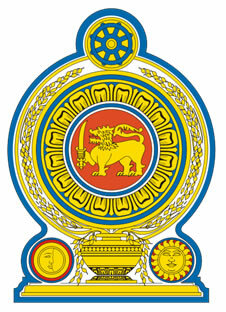Located on the Asian continent and bathed by the Indian Ocean, Sri Lanka is an island country whose territory has no land borders. In 1505, the Portuguese landed in the region, which, in the following centuries, was dominated by the Dutch. In 1883, the British Empire took control of Sri Lanka, which gained independence in February 1948. Since then, the country has joined the British Commonwealth – a bloc formed by the United Kingdom and its former colonies.
The national territory, located in the south of India, is home to tropical forests and has a mountain range in the central portion. With an estimated population of 20.2 million inhabitants, Sri Lanka was the scene of a war involving two ethnic groups: Sri Lankans, who account for 74% of the population and are followers of Buddhism; and the Tamil minority, whose predominant religion is Hinduism.
The Tamils claim the formation of a country of their own in the northern and eastern portions of Sri Lanka, because in these regions the majority of the population is formed by this ethnic group, which is excluded from some services social. In 1972, the separatist group Tigers for the Liberation of Tamil Eelam (LTTE) was formed, and in 1983 the two ethnic groups started a civil war. According to data from the United Nations (UN), this confrontation caused the death of 80,000 to 100,000 people. Only in May 2009 did the war come to an end, due to the surrender of the LTTE.
Agriculture is responsible for employing half of the inhabitants, and corresponds to 20% of the Gross Domestic Product (GDP), with emphasis on the production of tea (the country is the largest producer in the world). The industrial sector is based on the food, textile, petrochemical, ceramics, cement and fertilizer segments.

Sri Lanka Coat of Arms
Sri Lanka data:
Territorial extension: 65,610 km².
Location: Asia.
Capital: Columbus.
Climate: Tropical (to the north) and equatorial (to the south).
Government: republic with mixed form of government.
Administrative division: 9 provinces and 25 districts.
Language: Sinhala and Tamil (official), English.
Religions: Buddhism 68.3%, Hinduism 11.2%, Christianity 9.6% (7% Catholics, Protestants 2.6%), Islam 8.6%, no religion and atheism 2.3%.
Population: 20,237,730 inhabitants. (Men: 9,965,629; Women: 10,272,101).
Composition: 74% Sinhalese, 16% Tamil, 7% Arab, European, Malay and Vedic 3%.
Demographic density: 308.4 inhab/km².
Average annual population growth rate: 0.8%.
Population residing in urban areas: 15.09%.
Population residing in rural areas: 84.91%.
Undernourished population: 21%.
Life expectancy at birth: 71.9 years.
Households with access to clean water: 82%.
Households with access to a health network: 86%.
Human Development Index (HDI): 0.658 (average).
Currency: Sri Lanka Rupee.
Gross Domestic Product (GDP): US$40.7 billion.
GDP per capita: 1,676 dollars.
External relations: World Bank, Commonwealth, IMF, WTO, UN.
By Wagner de Cerqueira and Francisco
Graduated in Geography
Brazil School Team
countries - geography - Brazil School
